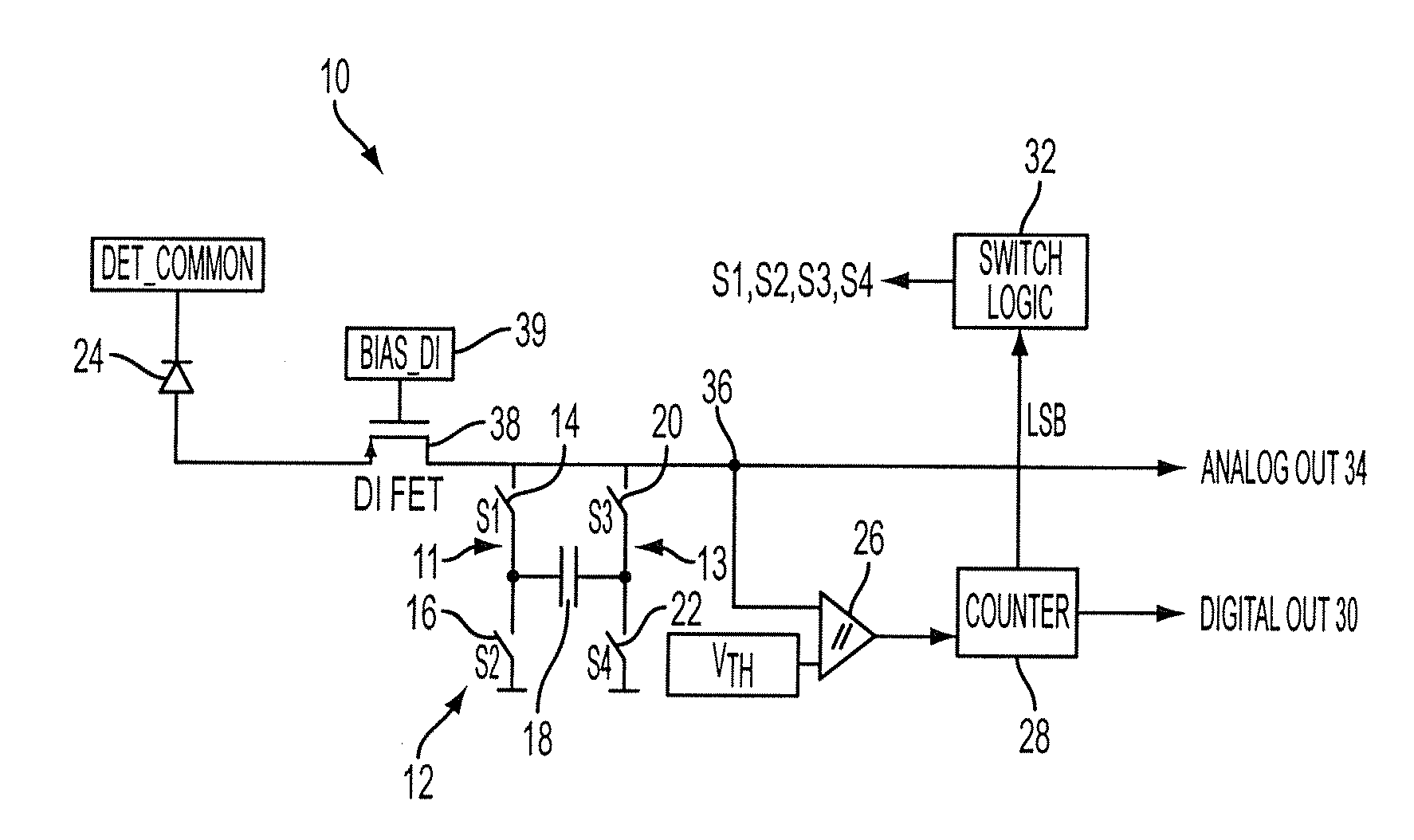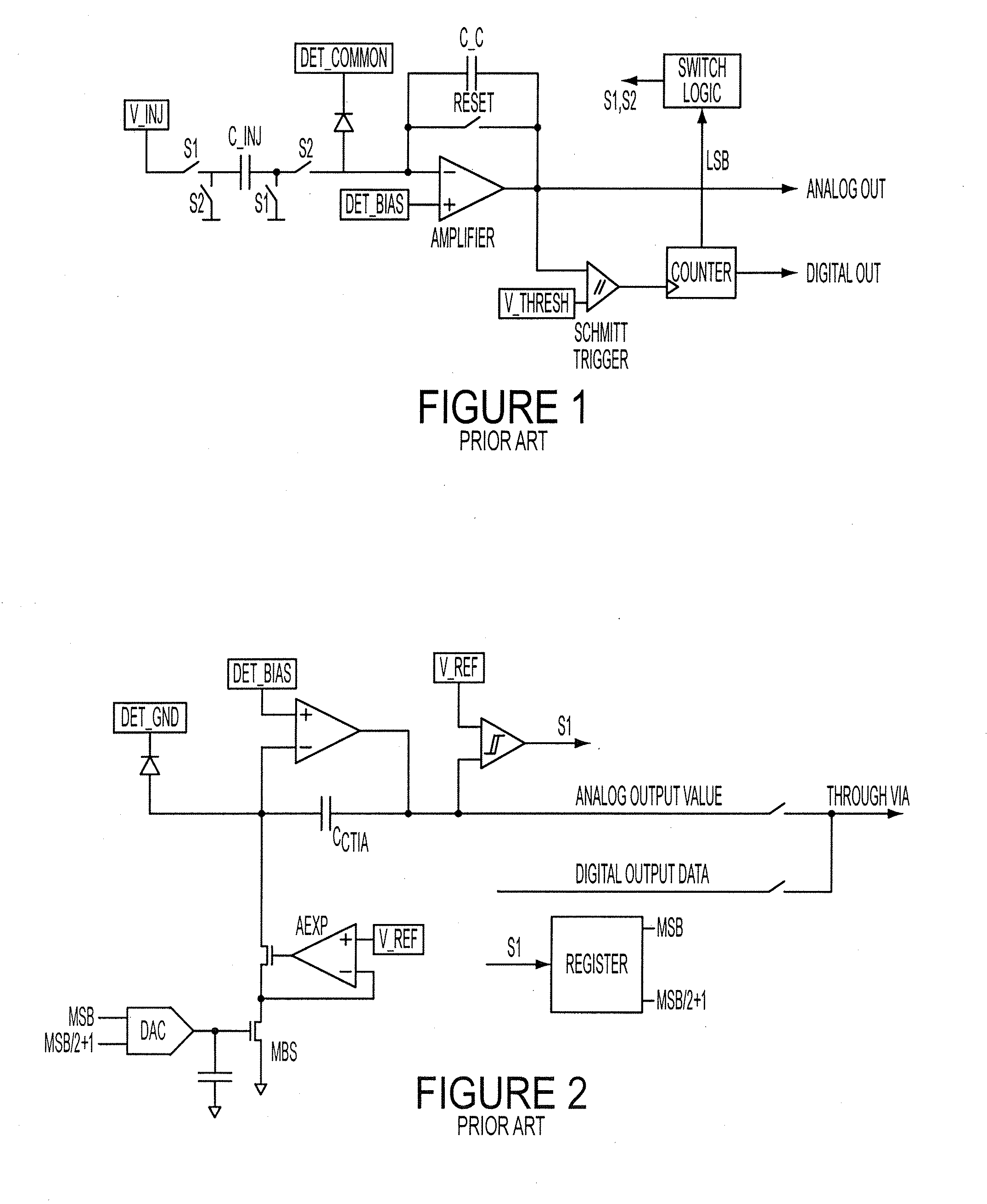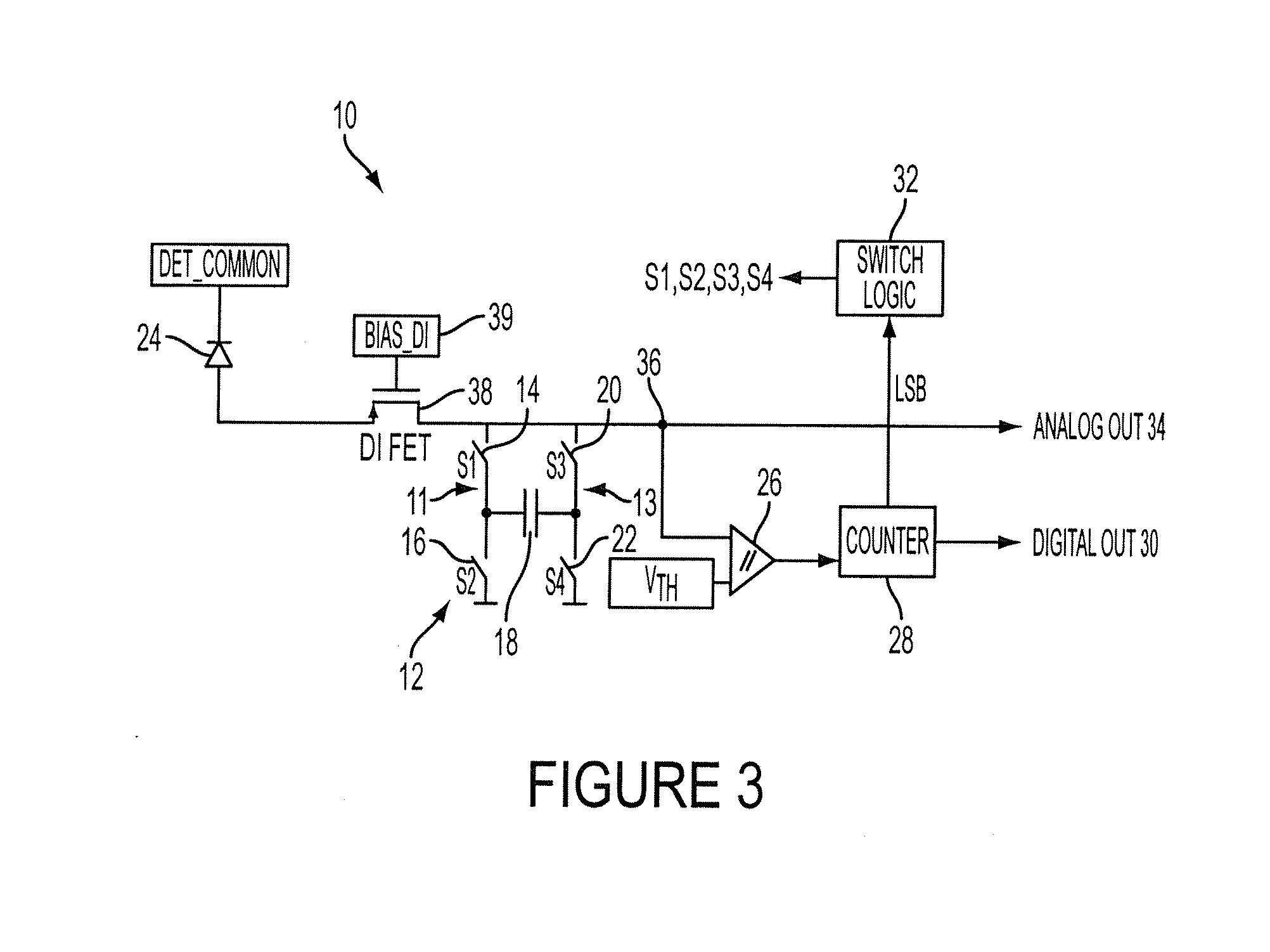Numerical full well capacity extension for photo sensors with an integration capacitor in the readout circuit using two and four phase charge subtraction
- Summary
- Abstract
- Description
- Claims
- Application Information
AI Technical Summary
Benefits of technology
Problems solved by technology
Method used
Image
Examples
Embodiment Construction
[0034]FIG. 3 is a circuit diagram of a unit cell digitizer 10 with Direct Injection (DI) type front end, according to an embodiment of the invention. The unit cell digitizer 10 may include an integration capacitor 18 coupled to a photodiode 24 and a DI FET 38 via a switch matrix 12. The switch matrix 12 has two switches 14 and 16 on one side 11 of the integration capacitor 18 and two switches 20 and 22 on the other side 13.
[0035]The DI FET 38 may be either N or P type depending on whether electrons (N type DI transistor) or holes (P type DI transistor) are read out by the unit cell digitizer 10. The DI FET 38 may drain charge from the photodiode 24 by offering a low impedance path onto the integration capacitor 18. The DI FET 38 keeps the voltage on the source constant but allows current to flow off with very low resistance into a high impedance node 36. The bias voltage on the DI FET 38 is Bias_DI 39.
[0036]The switch matrix 12 may allow electronic “rotation” of the integration capa...
PUM
 Login to View More
Login to View More Abstract
Description
Claims
Application Information
 Login to View More
Login to View More - R&D
- Intellectual Property
- Life Sciences
- Materials
- Tech Scout
- Unparalleled Data Quality
- Higher Quality Content
- 60% Fewer Hallucinations
Browse by: Latest US Patents, China's latest patents, Technical Efficacy Thesaurus, Application Domain, Technology Topic, Popular Technical Reports.
© 2025 PatSnap. All rights reserved.Legal|Privacy policy|Modern Slavery Act Transparency Statement|Sitemap|About US| Contact US: help@patsnap.com



